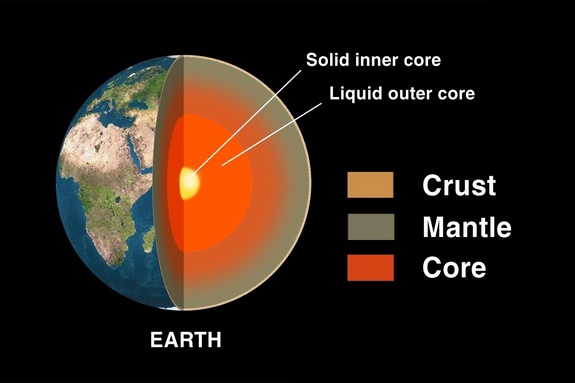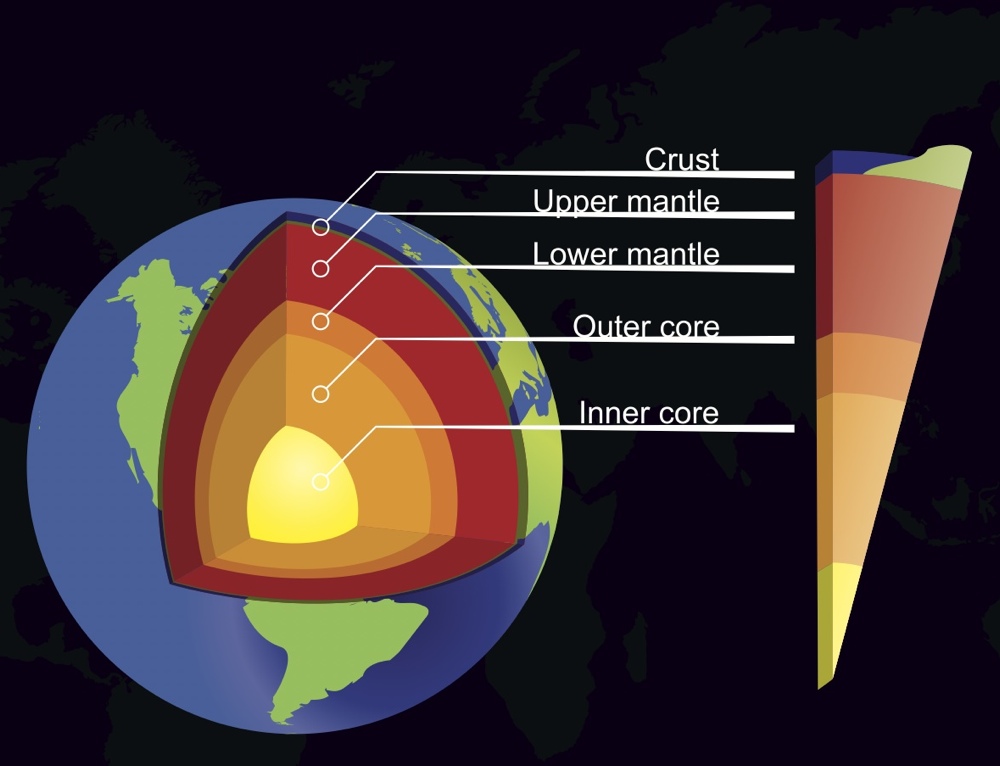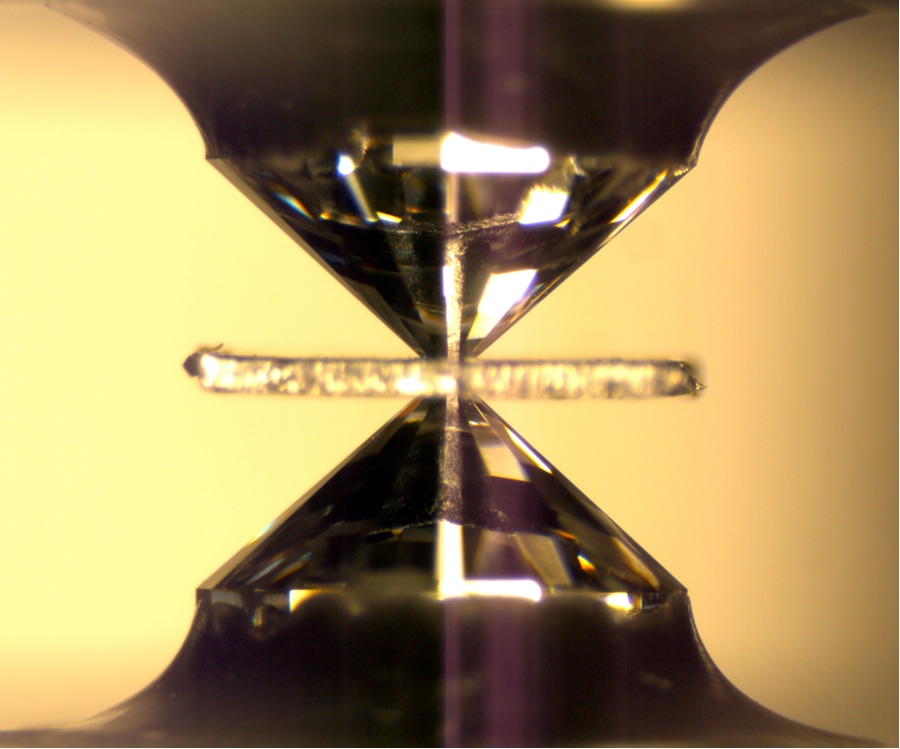In Photos: Ocean Hidden Beneath Earth's Surface

Earth's Layers

Scientists have now found evidence for oceans' worth of water locked up in a mineral called ringwoodite lurking deep within the Earth's rocky mantle. The mantle lies between Earth's crust (at the surface) and its deep core. [Read full story on the hidden ocean]
Plate tectonics table

The researchers, who describe their results in the June 13, 2014, issue of the journal Science, say their results will shed light on Earth's water cycle, and how plate tectonics, which details how Earth's outer shell is divided into several plates that glide over the mantle, moves water between the surface of the planet and interior reservoirs, researchers say. [Read full story on the hidden ocean]
Earth's Mantle

The Earth's mantle is the hot, rocky layer between the planet's core and crust. Scientists have long suspected that the mantle's so-called transition zone, which sits between the upper and lower mantle layers at depths of 255 to 410 miles (410 to 660 kilometers) below Earth's surface, could contain water trapped in rare minerals. However, direct evidence for this water has been lacking. [Read full story on the hidden ocean]
mantle-schematic-120322

In order to find out whether this mantle transition zone indeed held a deep reservoir for water, the researchers ran experiments on water-rich ringwoodite, analyzed seismic waves travelling through the mantle beneath the United States, and they also studied numerical models.
Shown here, seismic waves reflect from the interface of the lithosphere-asthenosphere boundary within Earth's mantle. Below the lithosphere lies the asthenosphere, the portion of the mantle that is made up of hot, weak, flowing rock, but that is nevertheless solid. [Read full story on the hidden ocean]
Ringwoodite mineral

Ringwoodite is a rare type of blue-hued mineral, whose fragments are shown here, that forms from olivine under extremely high pressures and temperatures, such as those that exist in the mantle's transition zone. The fragments shown here were synthesized in the laboratory. [Read full story on the hidden ocean]
Diamond Anvil

The researchers synthesized hydrous ringwoodite and recreated the temperatures and pressures it would experience in the mantle transition zone. To create those conditions, they heated the ringwoodite with lasers and compressing it between hard, anvil-like diamonds (setup shown here).
They found the ringwoodite transformed into silicate perovskite. [Read full story on the hidden ocean]
Blue Crystal

View into a high-pressure diamond cell of the mineral called hydrous ringwoodite (blue crystal). The crystal measures about 0.1 mm across and contains around 1 weight percent H2O in its crystal structure.
At pressures corresponding to a depth of more than 400 miles (700 km), when heated with a laser (orange spots) a dehydration reaction occurred when ringwoodite transformed to higher-pressure minerals. That dehydration reaction was then observed beneath North America by using seismic waves to image pockets of melt just below that same depth. [Read full story on the hidden ocean]
Get the world’s most fascinating discoveries delivered straight to your inbox.
A diamond from Juína, Brazil, containing a water-rich inclusion of the olivine mineral ringwoodite.

In March 2014, another research group discovered a diamond from Earth's mantle with hydrous ringwoodite sealed. That find suggested the mantle's transition zone could contain water, but it was the only ringwoodite from the mantle scientists had ever analyzed; as such, scientists weren't sure the specimen was representative of other mantle ringwoodite. [Read about that diamond finding]

